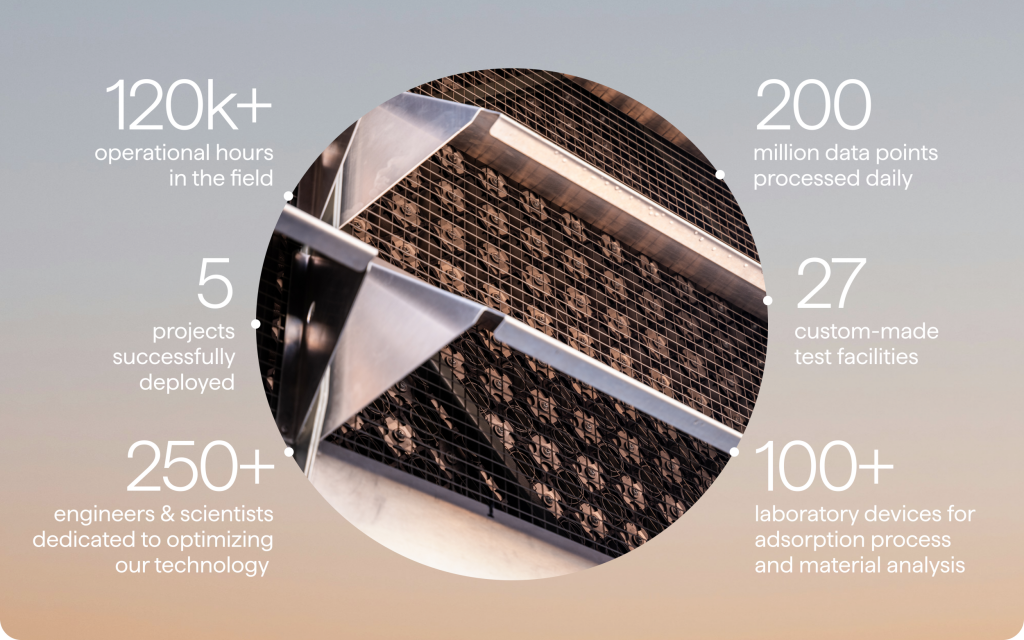Climeworks is the global leader in carbon removal solutions
Climeworks is the global leader in carbon removal solutions
High-quality is in our DNA.
1st commercial Direct Air Capture (DAC) and storage facilities and only independently certified AAA-rated projects.
2 generations of technology successfully deployed in the field.
3rd generation technology in large-scale validation since 2024.
Climeworks lives and breathes DAC, going on two decades.
Every day, our team of 250+ engineers, scientists, and innovators pushes the industry bar even higher.
When Direct Air Capture is combined with deep underground storage, the CO₂ is locked away.

When Direct Air Capture is combined with deep underground storage, the CO₂ is locked away.
Through natural mechanisms, CO₂ is returned to the earth’s crust, where it becomes part of the rock cycle
The planet has the capacity to safely store trillions of tons of CO₂
Once stored, the CO₂ remains locked away for geological timescales
We work with trusted partners to ensure safe and permanent storage
Tomorrow belongs to those who prepare for it today.
No cookies = No worries: We don’t use 3rd party cookies and only use the cookies we strictly need to keep our website functioning. Our website usage data is 100% cookie-less, anonymized, and under our full control. For more information, please check out our privacy notice.


